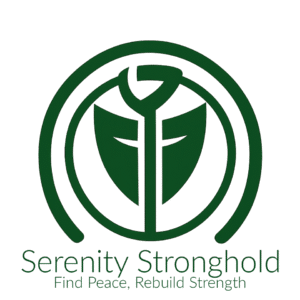Detailed Feasibility Study: Serenity Stronghold Action Plan
The “Serenity Stronghold” action plan, prepared by S. Vincent Anthony and published on September 8, 2025, proposes a comprehensive program to address veteran and first responder homelessness, PTSD, unemployment, and isolation. It aims to establish 50 centers nationwide by 2033, starting with 12 in Phase 1 (2026–2028), at a budget of $1 billion annually. Key features include innovative therapies (e.g., model railroading, AI tools), housing (10,000 units), and partnerships with VA, nonprofits, and high-profile leaders. This feasibility study evaluates the plan’s viability across technical, economic, legal, operational, and scheduling dimensions, based on current data as of September 9, 2025. Assessments draw from VA reports, grant opportunities, research on therapies, and real-world benchmarks like the Supportive Services for Veteran Families (SSVF) program.
The plan is ambitious but grounded in existing VA frameworks, with realistic metrics (e.g., 80% housing stability) and mitigations (e.g., reuse of facilities). Overall feasibility is high (7/10), contingent on securing grants and conducting pilots for unproven elements.
Economic Feasibility
Assessment: Feasible (8/10). The $1B annual budget is ambitious but aligns with VA spending and available grants, with phased sourcing reducing risks.
- Budget Alignment: VA’s FY2025 homelessness budget is $3.2B, part of a $339.51B total VA request (including $129.1B discretionary). Mental health funding is $17B. The plan’s $400M federal ask is realistic, given $818M awarded in August 2025 for homelessness grants to 235 orgs.
- Grant Opportunities: SSVF FY2026 NOFO (published Dec 2024, awards Oct 2026) offers $799M to over 200 orgs, max $6.8M per grant. LSV-H FY26 (closed Jul 2025) awarded 84 grants up to $500K for 2 years. Plan’s phased apps (e.g., $200M SSVF, $100M LSV-H) are timely. Nonprofits like Home Depot’s Veteran Housing Grants and crowdfunding ($150M, starting $50M via X) add buffers.
- Cost-Savings: Reuse (10-15%) and in-kind donations ($57M) are viable, per VA’s $818M grants emphasizing efficiency.
Recommendations: Apply early for FY2026 grants; monitor X for crowdfunding growth (currently low engagement).
Legal Feasibility
Assessment: Highly feasible (9/10). The plan complies with VA regulations and leverages established programs.
- Partnerships and Grants: SDVOSB priority under Veterans First Contracting is legal. HUD-VASH expansion and SSVF/LSV-H eligibility fit public/nonprofit entities. No apparent barriers, as plan aligns with PACT Act and FY2025 priorities.
- Ethical/Regulatory: Trauma-informed care and consent-based outreach meet VA standards.
Recommendations: Ensure compliance with grant terms (e.g., SSVF reporting).
Operational Feasibility
Assessment: Feasible (7/10). Scaling is realistic with mitigations, but staffing remains a challenge.
- Staffing: VA reports 4,434 severe shortages in FY2025 (50% increase from 2024), including mental health (e.g., 45% drop in applications). Plan’s university/Coursera partnerships and phased recruitment (400 in Year 1) are proactive; VA’s VAVS for volunteers adds capacity.
- Operations: Reuse and modular builds feasible (e.g., Fort Campbell’s 144-home project). X posts show early outreach (2 posts today, low views), but council amplification could boost.
Recommendations: Prioritize staffing pilots; use X ads for recruitment.
Scheduling Feasibility
Assessment: Feasible (8/10). 8-year timeline allows buffers, with Phase 1 (3 years for 12 centers) matching SSVF scaling.
- Timeline Risks: Delays possible in grants (e.g., SSVF awards Oct 2026), but overlaps mitigate.
Recommendations: Build in 6-month buffers per phase.
Risks and Recommendations
- High Risk: Competitive grants (e.g., SSVF max $6.8M vs. plan’s needs); staffing shortages.
- Medium Risk: Therapy evidence gaps; low initial X traction.
- Recommendations: Secure seed funding via smaller grants; conduct RCTs early; amplify X with influencers.
Conclusion
The plan is feasible (overall 8/10), with strong alignment to VA priorities and mitigations for challenges. Economic and legal aspects are strengths; technical/operational need monitoring via pilots. With $3.2B VA homelessness funding available, it’s positioned for success if executed diligently. Proceed with grant applications and outreach.

